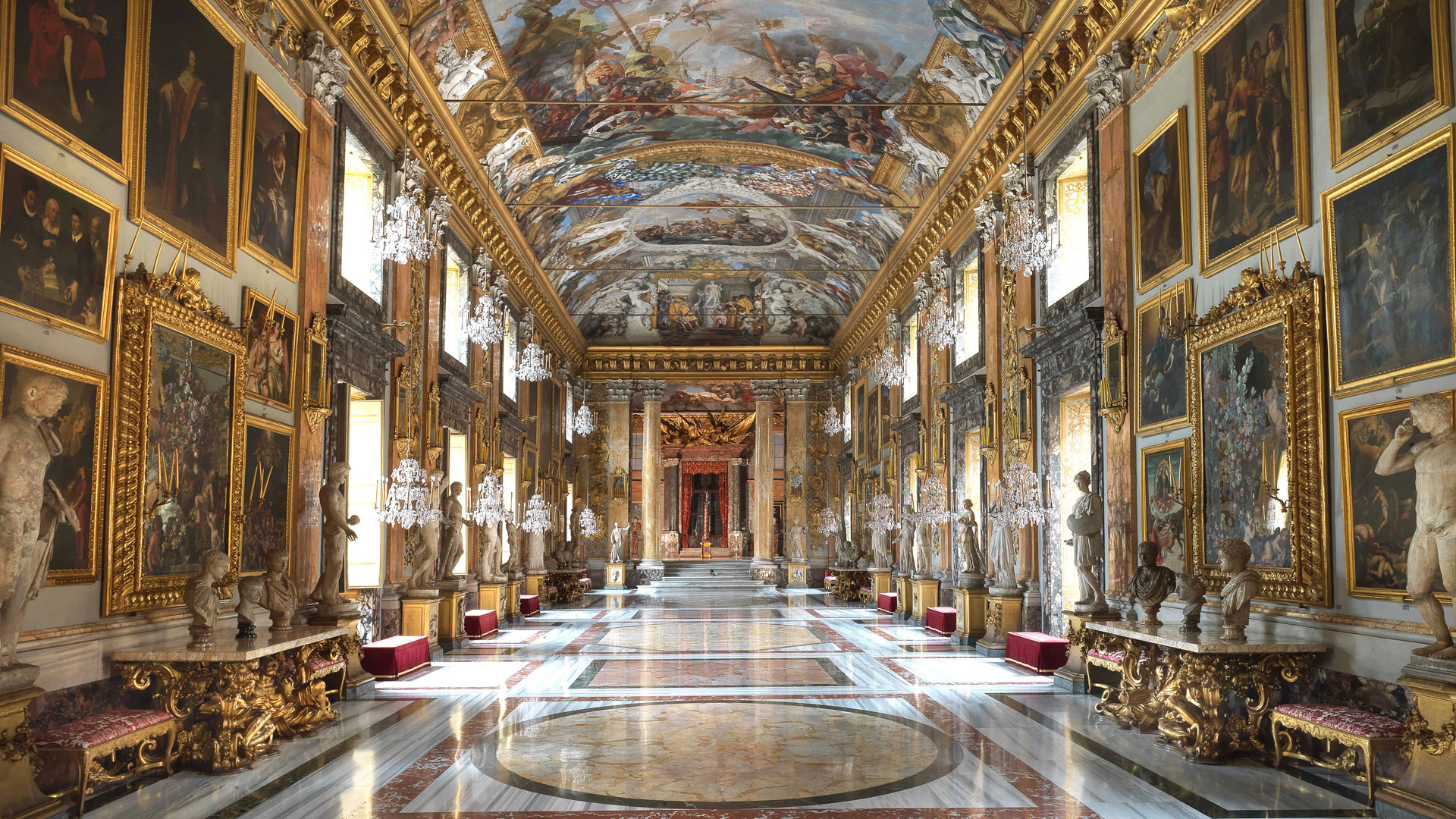
The Colonna Gallery is located inside Palazzo Colonna in Rome and houses one of the largest private art collections, with works by Tintoretto, Perugino, Rubens, Bronzino and many other internationally renowned artists. But the architecture of the Palazzo and the Gallery itself are works of art, expressions of the Baroque and other styles that were integrated during its long construction.
The palace covers about three hectares and is the largest noble residence in Rome, where the descendants of the Colonna family still live today. Originating from the village of the same name near Rome and with a history stretching back thousands of years, the Colonna family was a patrician lineage that gave birth to a Pope (Martin V), cardinals, men of letters and statesmen. How can one buy tickets for the Colonna Gallery and Palazzo Colonna? And what wonders do they house inside?
Online tickets for Palazzo Colonna in Rome
Tickets for Palazzo Colonna allow a visit to the rooms of the Galleria Colonna, the construction of which began in the mid 17th century at the behest of Cardinal Girolamo I Colonna and his nephew Lorenzo Onofrio.
The initial project, entrusted to the architect Antonio del Grande, was to create a place of representation celebrating the victory of the Christians over the Turks during the Battle of Lepanto (1571). On this occasion, the papal fleet was led by a member of the Colonna family, Marcantonio II.
The construction was then completed by Gian Lorenzo Bernini, Paolo Schor and Carlo Fontana and the inauguration took place in 1700, in the presence of Lorenzo Onofrio’s son, Philip II.
The Gallery is open every Friday and Saturday from 9 a.m. to 1.15 p.m. (time of last admission) and the ticket includes a visit to:
- the Gallery
- Gardens
You can choose, when purchasing your ticket, to also add a visit to Princess Isabelle’s flat, left as it was when she was still alive. This is located on the ground floor and was built on the ancient Temple of Serapis, from which comes the porphyry crocodile at the entrance, while inside you can find thirty-seven Vanvitelli views.
The tour inside this Baroque palace is also wheelchair-accessible and the ticket cannot be rescheduled, but can be cancelled by 23:59 on the day before the visit if the appropriate option is chosen at the time of purchase.
With the ticket for the Galleria Colonna open option, on the other hand, you can buy the entrance without choosing the date in advance. The Palazzo is located in Piazza SS. Apostoli, but the entrance is from Via della Pilotta 17.
Galleria Colonna and Galleria Spada
Both the Galleria Colonna and the Galleria Spada are notable for the works they contain, but also for their decorations and richly frescoed rooms.
In particular, the Galleria Spada, in the palace that still houses the Council of State, in addition to works by artists such as Guido Reni, Guercino, Titian, Artemisia Gentileschi and Parmigianino, houses Bernini’s famous Prospettiva of 1653: a colonnade that, thanks to sophisticated perspective calculations, creates the illusion of a long gallery and frames a statue of a warrior. This too, thanks to perspective illusionism, appears larger than its actual size. Initially, due to the open-air location, there was a wall at the end of the colonnade painted as if it were a forest, which was replaced in the mid-19th century by the sculpture.
With a combined ticket for the Spada and Colonna Galleries, you can see two unique collections of artworks, the first belonging to Cardinal Bernardino Spada and the second to the noble Colonna family.
The entrance to the Spada Gallery is from Piazza Capo di Ferro, another name by which the Palace is known, except on Thursdays, when the entrance is from Vicolo del Polverone 15b. It is open daily from 8.30 am to 7.30 pm (except Tuesdays, when it is closed) and the last entrance is at 7 pm.
As in the case of the Galleria Colonna, it is possible to cancel the ticket before 23:59 if the appropriate option is selected.
Galleria Colonna: what to see
The rooms open to the public are many and full of important pieces, but which works are a must-see at the Colonna Gallery?
Starting with the Hall of Landscapes, there are landscape paintings by Gaspard Dughet, while the vault is frescoed with an allegory of the Battle of Lepanto by Sebastiano Ricci, painted in the late 17th century.
The Hall of the Apotheosis of Martin V, or Oddone Colonna, pope from 1417 to 1431, takes its name from the subject of the painting by Benedetto Luti hanging from the ceiling. On the walls we find, among other works, Annibale Carracci’s ‘Mangiafagioli’, an example of genre painting, Francesco Albani’s ‘The Rape of Europe’ and Perugino’s ‘Saint Jerome Penitent in the Desert’.
In the Tapestry Room, besides 17th century textiles, one can see Pieter Paul Rubens‘ ‘Reconciliation of Esau with Jacob’.
Finally, in the Room of the War Column, named after the red marble column in the centre, the ceiling was frescoed by Giuseppe Chiari and depicts the presentation of Marcantonio Colonna to the Virgin Mary. On the walls are works by Bronzino and Ghirlandaio.
The Great Hall of the Colonna Gallery
Before entering the Great Hall of the Galleria Colonna, on the flight of stairs that connects it to the War Column Room, we find a cannonball dating back to the French offensive of 1849, during the Roman Revolution.
The interior houses Guercino’s ‘St. Paul the Hermit’ and ‘Martyrdom of St. Emerenziana’, Guido Reni’s ‘St. Francis at Prayer and Two Angels’ and Francesco Salviati’s ‘Adam and Eve’, as well as several works from the circle and workshop of Rubens.
All of the works in the Colonna Gallery – as many as 270 – are bound by the 19th century fideicommissum, which means that the works conserved here belong inalienably to the gallery.

